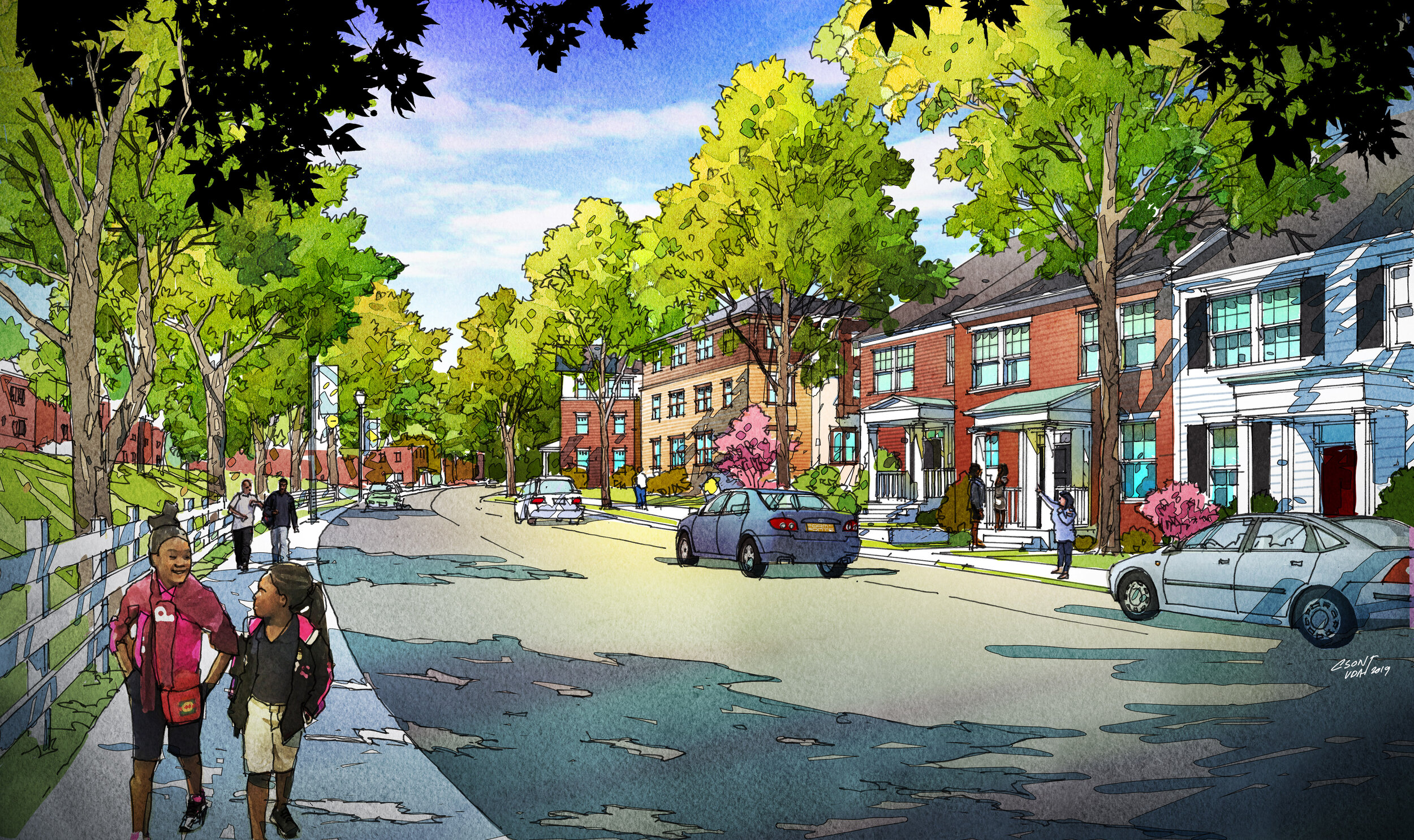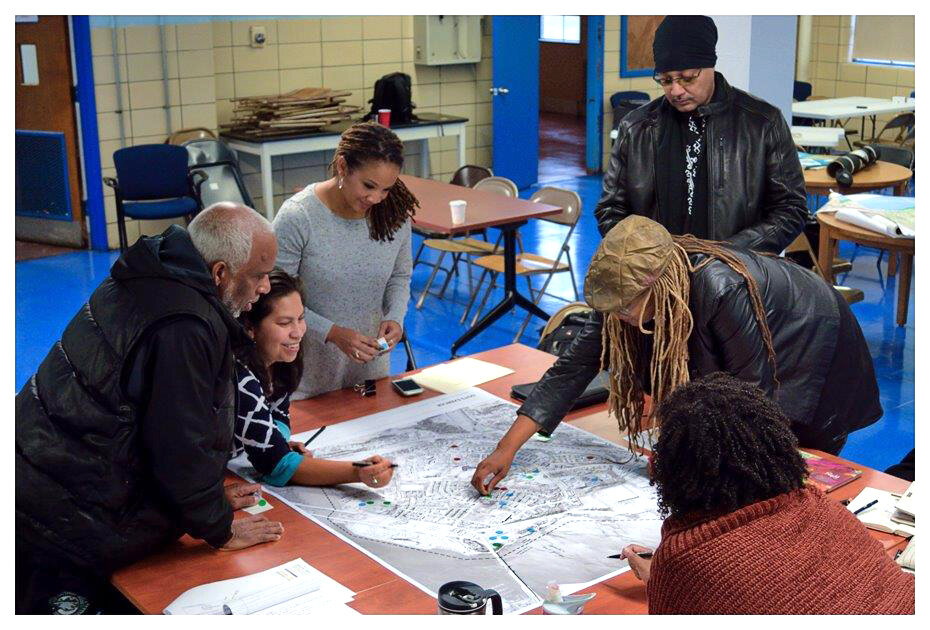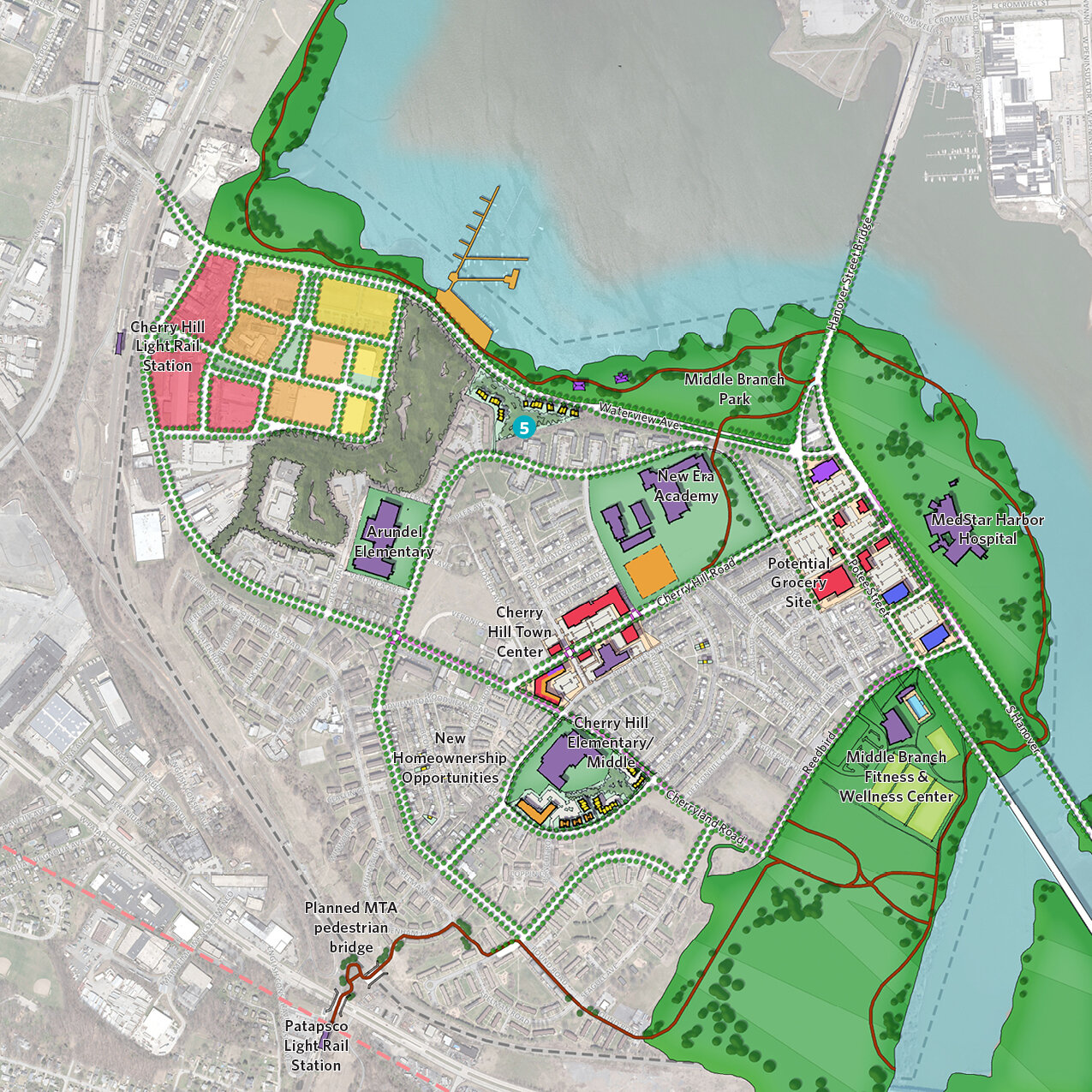A Baltimore Neighborhood Pivots to Implementation during COVID-19
On April 16, the Baltimore City Planning Commission voted unanimously to accept the Cherry Hill Transformation Plan as the official community-managed plan for the neighborhood—the result of 6 months of hard work by the community. Now, with the urgent threat of COVID-19 and a disproportionate number of deaths in the community, the Cherry Hill Development Corporation is leading efforts to address immediate needs, begin implementation, and advocate for change.
The Challenge
Cherry Hill is a neighborhood of 8,000 people in South Baltimore. In the 1940s it was a planned community for African American WWII veterans and their families. Today, the neighborhood is facing several challenges:
Physical barriers (the Patapsco River and railroad tracks)
Community distrust because of a lack of investment and broken promises
The largest concentration of public housing and low-income households in the city
A lack of market-rate amenities and investment
Poor access to fresh food
A lack of quality housing options and amenities
Outside perceptions of crime and residents’ feelings of safety
Despite these difficulties, the community in Cherry Hill is strong and working together to improve the quality of life and help residents reach their goals.
Changing Context for South Baltimore
The southern part of the city historically suffered from disinvestment, but with Under Armor and others investing in Port Covington across the river from Cherry Hill, there’s a renewed focus on equitable development. Several efforts are moving forward, including an established Community Benefits Agreement for six communities, enhancing 11 miles of the Middle Branch waterfront and connecting the adjacent neighborhoods, and a $21 million City fitness & wellness center in Cherry Hill. Residents are excited about these new amenities but are also fearful of gentrification, displacement, and how their neighborhood might change.
Process
UDA helped run a 6-month process to develop a 15-year implementation plan for Cherry Hill. The community showed that they are dedicated to making something happen:
Hundreds of current and former residents participated enthusiastically in public meetings, open houses, tours, and discussions.
Cherry Hill is not afraid to have hard conversations to ensure that every project will benefit the people who live in the neighborhood today. They will hold developers and partners to that standard.
Cherry Hill youth are engaged and care about their neighborhood.
Non-profit organizations and service providers in the neighborhood work tirelessly to help increase health, education, and wellness opportunities.
The community elected a Steering Committee to meet monthly and represent them as public housing residents, private rental residents, homeowners, and youth voices.
“The only way this is going to get done is through cooperation. It has to be what we want.” ~ former Cherry Hill resident
Implementation
“Make something happen” was a refrain from the residents. The plan focuses on realistic 0-2-year, 2-5-year, 5-10-year, and 10-15-year timeframes. It includes:
Housing strategies to support existing renters and homeowners, increasing mixed-income rental options, and creating new homeownership opportunities for Cherry Hill families
Building on efforts that already have momentum - 21st Century Schools, a Lyft grocery access program, a co-op grocery store, and a new pedestrian bridge over the rail to help residents access an LRT station
A focus on short-term initiatives like community-designed crosswalks at key intersections and a business incubator for Black-owned businesses
“Mix homeownership and rental together. We want to be one community, not divided.” ~ Cherry Hill resident
Changing Dynamic with COVID-19
By the third week in April, 50 people have died in the 21225 zip code that includes most of Cherry Hill. Like in other low-income communities of color, the disease is exposing and exacerbating underlying inequality. CHDC and their partners have organized an emergency response committee to address:
COVID-related and other health needs
Food insecurity
Loss of household income
Youth needs and internet and computer access for education
Preventing violence and domestic issues
Mental and behavioral health
CHDC is beginning to use the Purpose Built Communities model for addressing mixed-income housing, the education pipeline, and community wellness as the platform for addressing both immediate needs and long-term transformation.
Executive Director of the CHDC, Michael Middleton, is focused not just on helping the community cope with this crisis but using this opportunity as leverage to work with elected leaders. He knows that things can’t just go back to the way they were for communities like Cherry Hill – structural changes and real partnerships are needed to change the trajectory of residents’ futures.
“COVID-19 has exposed the horrible inequalities in communities of color and it’s devastating. 50 people have died in the zip code that includes Cherry Hill - it’s absolutely horrible. But you know, it’s not enough to just acknowledge it. This time provides us with the opportunity to take some real action. We have to use it as leverage to work with state leadership to correct the injustices.” ~ Michael Middleton, Executive Director CHDC




All photographs © Mr. Charles Weaver
